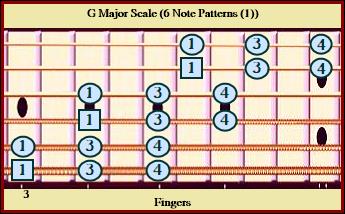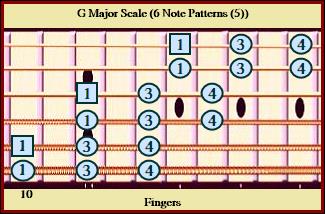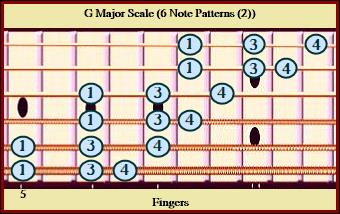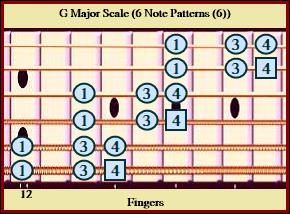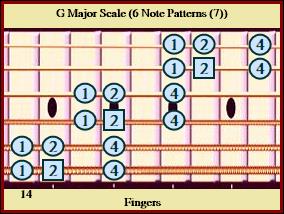G Major Scale 3 Note/String 6 Note Patterns On Guitar
G Major Scale 3 Note/String 6 Note Patterns On Guitar
G Major Scale 3 Note/String 6 Note Patterns On Guitar. This is a technique of breaking something down to smaller chunks to make it easier to learn. The examples below are analyzing the G Major Scale on the two lowest strings E (6th) & A (5th). A lot of people have to find a way visualize something before they can put it into their total recall memory. To also help people remember something is they have to physically apply and do something. The numbers in the notes are the finger placement (Refer to Fret/Finger Placement Post) so you can try it.. This scale is made up of half steps (no frets between 2 notes) and whole steps (1 fret between 2 notes).
We now have seven – six note groups, notice that two shapes are the same (Fret 3 & Fret 10- whole step-whole step, whole step-whole step). The five unique shapes is (Fret 5 – whole step-half step, whole step-whole step). (Fret 7- half step-whole step, whole step-half step), (Fret 8 – whole step-whole step, half step-whole step). (Fret 12 – whole step-half step, whole step-half step), (Fret 14 – half step-whole step, half step-whole step).
When you try playing these shapes (Fret 3) you are going to play them on two strings only up the neck in a straight sequence (1-2-3-4-5-6) Tablature – ( 6th E -3–5–7-) (5th A – 3 –5–7-). The top 5% best players practice scales this way up and down the neck on all the pairs of strings.(Paul Gilbert, Gregg Howe, Vinnie Moore).
One warning the shapes are going to be different between the (3rd G string & 2nd B string). The notes on the 2nd B String have to shift up a half step making the shapes offset.
When you start getting the hang of practicing scales like this you can also apply sequences to these six note groups. Sequences are a repetitive order of a group of notes. Here is an example (instead of 1-2-3-4-5-6 try 1-2-3-4-3-2-1-2-3-4-5-6) this is a sequence that Paul Gilbert teaches a lot. Practicing scales like this can build great dexterity in your fingers, building your chops and speed. It especially helps if you use a metronome set to straight clicks, triplets and quadruplet, building from slow to fast.
Here is a final note, playing scales up and down and practicing scale sequences is only one part of the practice equation to becoming a great player. There is speed and chops, but there also is melodic control. Melodic phrasing is a small group of notes played in an unique expressive order crafted from the rhythm and harmony that can hook the listener.. The best solos have a hook melody interwoven in them (usually at he start and end and somewhere in the middles in different octaves) along with the fast ripping runs of notes. Learning licks from all kinds of sources (Books, Software, Magazines, Tablature web sites and By Ear off CD’s and MP 3’s). This article builds on my Major Scale 3 Note / String Fingerings Post.
Guitar Analyzer Software has a 3 shape fingering selection category to explore this area in more depth for each scale.
1) Fret 3 & Fret 10 (whole step-whole step, whole step-whole step)
2) Fret 5 (whole step-half step, whole step-whole step)
3) Fret 7 (half step-whole step, whole step-half step)
4) Fret 8 (whole step-whole step, half step-whole step)
5) Fret 12 (whole step-half step, whole step-half step)
6) Fret 14 (half step-whole step, half step-whole step)

